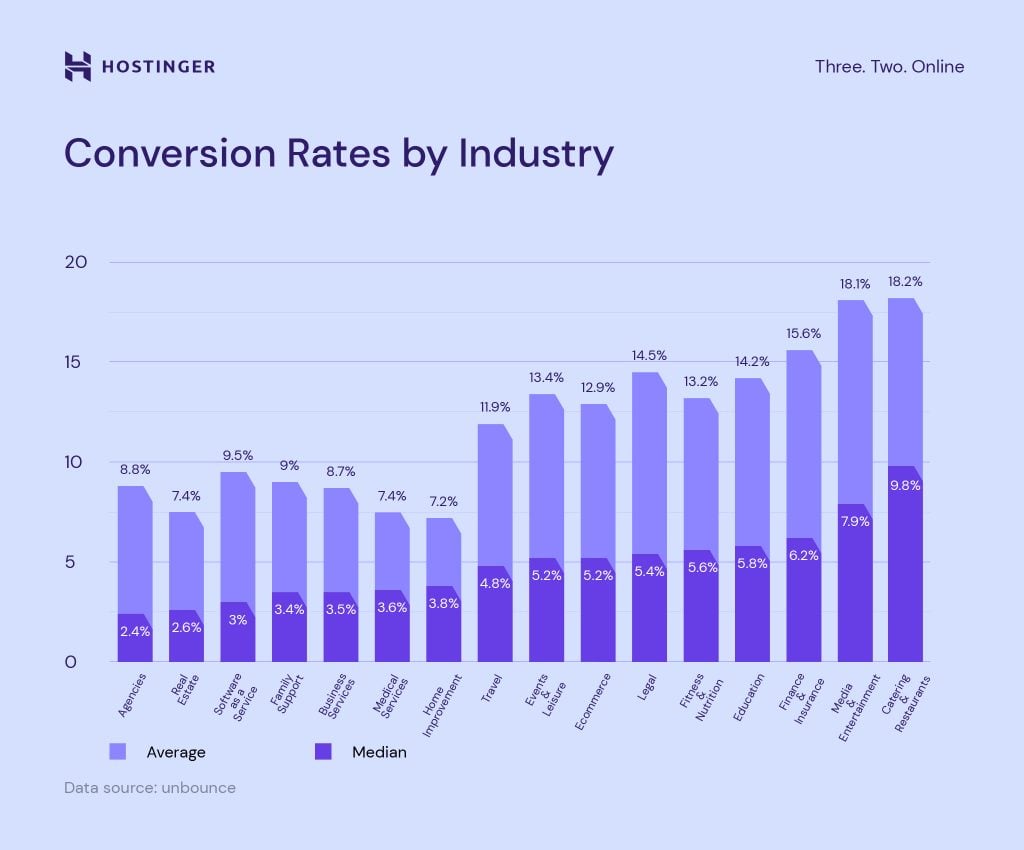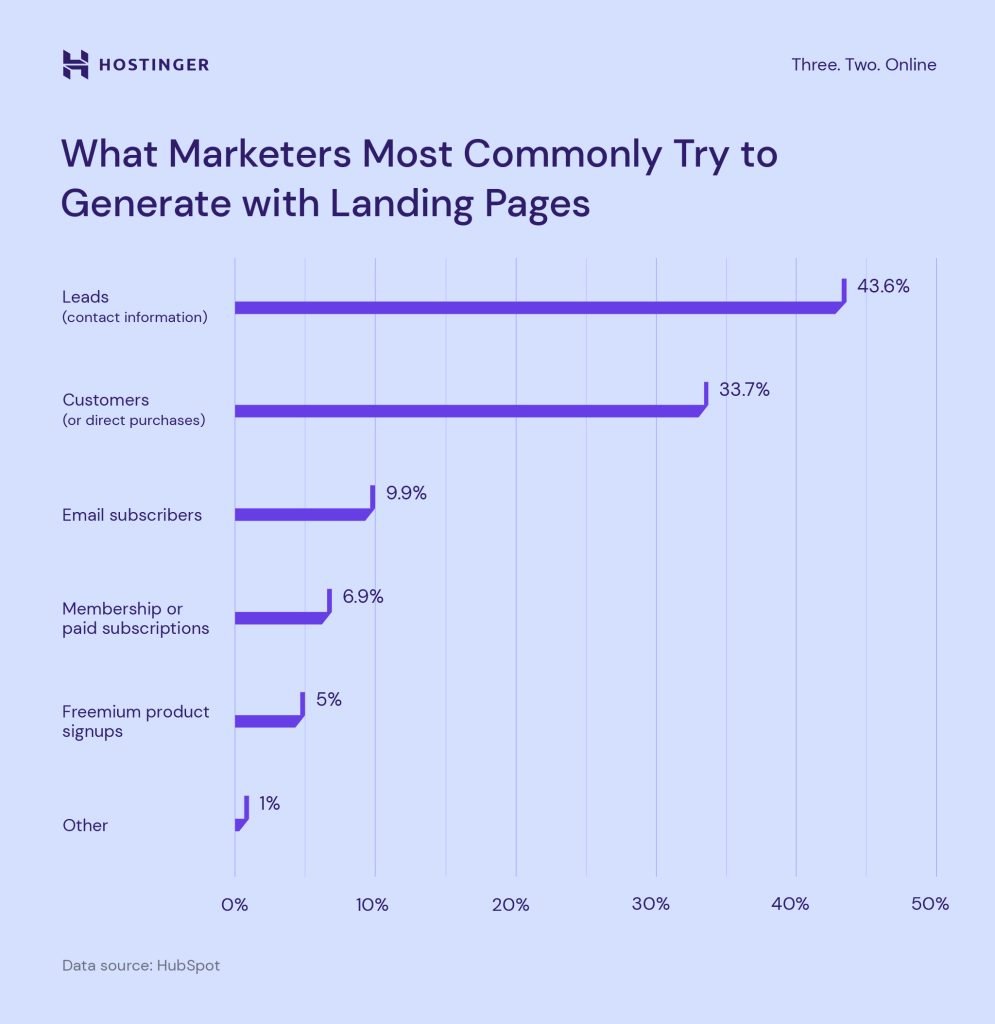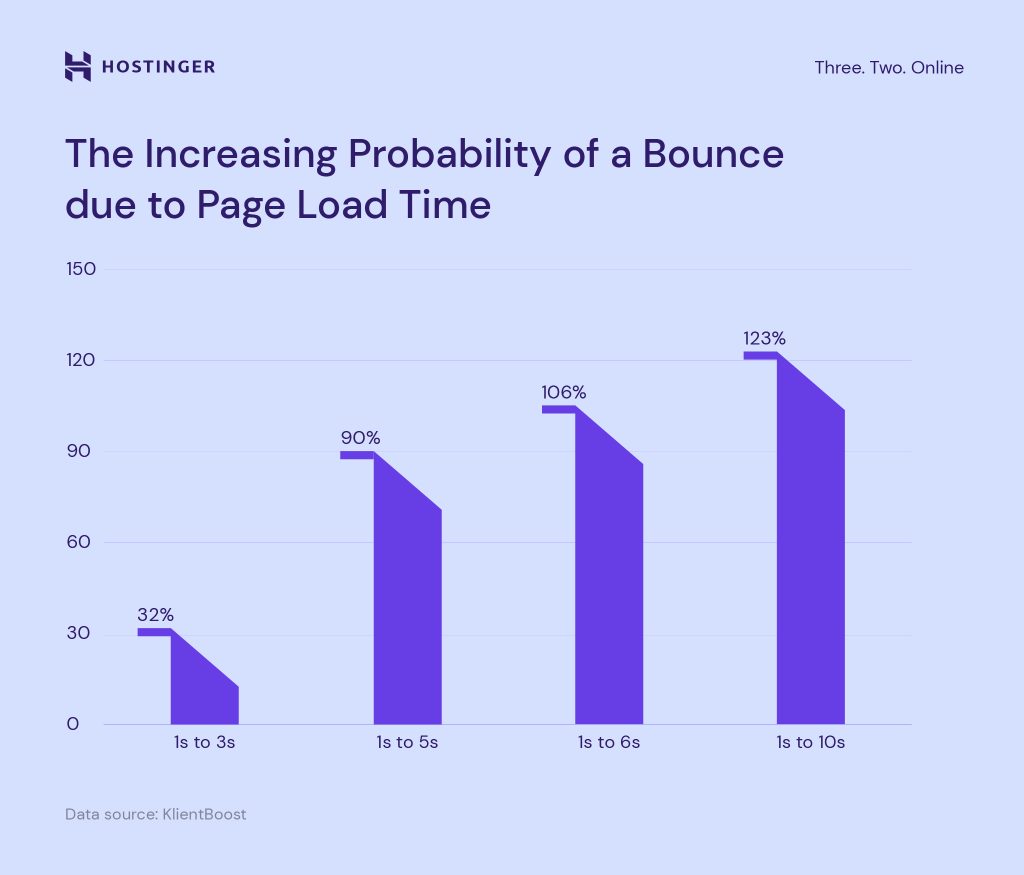Boost your conversions: Insightful landing page statistics in 2025

As a marketer, you know how important landing pages are for generating leads and guiding users through the sales funnel, which eventually leads to purchases.
That said, creating a high-converting landing page is no simple task. Many factors go into the mix, such as user experience (UX) design, copywriting techniques, promotion strategies, and the list goes on.
If you want to improve the results of your sales pages, this article will reveal insights into the latest trends and future predictions of landing page optimization.
Let’s get right into it.
Top landing page stats you should know
- The average landing page conversion rate is 4.3% across all industries.
- Shorter landing pages with clear CTAs outperform longer ones by 13.5%.
- Business sites with 10-15 landing pages generate 55% more customers than those with less than 10 pages.
- Personalized CTAs convert 42% more visitors than generic ones.
- Embedding videos on landing pages can lead to an 86% increase in conversions.
- Using the right headline improves user signups and sales.
- Only 1 out of 8 landing page A/B tests achieved significant changes.
- Landing pages with an improved UX design tend to perform four times better.
- Roughly 30% of companies will use AI to enhance A/B testing by 2025.
- Testimonials are featured in 36% of the top-performing landing pages.
Key landing page performance statistics
In this section, you will find stats that highlight the importance of landing pages in generating and converting leads for businesses.
1. The average landing page conversion rate is 4.3% across all industries
However, a good conversion rate varies depending on your industry, as different sectors have specific audiences with unique behaviors, needs, and buying power.
For example, restaurants and catering businesses typically convert 9.8% of all visitors, while the median conversion rate for Software as a Service (SaaS) products stands at 3%.
As you can see, a 5% conversion rate might be considered great for one sector but not so much for the other. That’s why you need to know the industry benchmark before deciding whether your landing page performs well or needs more work.

2. Shorter landing pages with clear CTAs outperform longer ones by 13.5%
If you want to boost your landing page performance, consider making it simpler and more concise. Customers have shorter attention spans, and cramming multiple offers on your landing page will only confuse them.
By removing unnecessary information and focusing on the core value proposition, visitors can quickly understand how your product solves their problems.
Of course, using a clear call-to-action (CTA) button is also important to guide prospects into performing the desired action, such as signing up for your newsletter, submitting a contact form, or buying a product.
3. Generating leads is the primary goal for 43.6% of marketers
33% of marketers said that direct customer purchases are their top priority when creating a landing page.
Interestingly, almost half of marketers (43.6%) don’t see landing pages as the place where sales happen. Instead, their goal is to collect contact information and nurture leads further with various marketing campaigns.
Other common landing page objectives include generating email subscribers (9.9%), paid memberships (6.9%), and freemium product signups (5%).
4. Businesses with 10-15 landing pages see a 55% increase in conversions
Marketing is often a game of numbers, and research found that business sites with a higher amount of landing pages tend to generate more leads. In fact, those with over 40 landing pages saw an astonishing 500% increase in conversions or more.
When you think about it, publishing tons of landing pages on a specific niche allows you to build a topical authority, leading to higher Google rankings. Plus, it’s easier to create targeted offers for different audience segments.
5. Social media promotion drives traffic to landing pages for 51.5% of marketers

Beyond audience engagement, social media is a great channel to drive landing page traffic, according to 51.5% of surveyed marketers. 43.6% find email marketing useful for landing page promotion, while 35.6% prefer search engine optimization.
But getting more eyes on your sales pages is not just about investing in external platforms. On-page tactics like internal linking in blog posts and site-wide banners also prove effective.
Optimization and A/B testing for landing pages
A/B testing, or split testing, is a type of experiment used to compare two or more versions of content and see which one performs best.
In the context of landing pages, this might include testing different CTA button placements, product illustrations, or copywriting techniques to boost conversions.
Below, we’ve compiled various landing page optimization strategies companies use to get better results.
6. Visitor conversion increases by 42% with custom CTAs
According to the latest web design statistics, personalized CTAs convert 42% more customers than generic ones. The key here is to know your audience inside out so you can make an enticing offer.
Let’s say you run a marketing campaign for a hotel, and you know that most visitors are newlyweds. In this case, it’s better to include a specific message like “book your dream hotel for your dream honeymoon” in your CTA instead of just “book your hotel.”
Besides optimizing the copy, you also need to test different CTA designs to find the best-performing one. While various studies suggested that using a button as your CTA would result in 45% more clicks, the case might be different in your industry.
7. Embedding videos to landing pages can influence buying decisions
After watching a video, people retain 95% of the information. Compared to the number for text-based content (10%), it’s clear why more and more companies invest in video marketing these days.
Such a strategy also works for landing pages – adding explainer or testimonial videos helps prospects see your products in action, resulting in an 86% increase in conversion rate.
However, videos can slow down your website if not optimized properly. To maintain your page speed, embed videos from platforms like YouTube or Vimeo instead of uploading them directly to your server.
8. Using the right headline can lead to a 307% increase in conversions
An attention-grabbing heading makes readers stop whatever they are doing and shift their focus to your offering. While there is no exact formula for writing high-converting headlines, always speak to the audience’s pain points before presenting your product as the solution.
Using the exact words people type in search engines is also proven to be a game-changer. ConversionLab, a digital marketing agency, managed to get 31.4% more signups with this strategy.
The agency noticed that most queries use the term “design” instead of “create” or “build”. So, ConversionLab tweaked its landing page headings and CTAs accordingly to great effect.
9. Significant change achieved in just 1 out of 8 A/B tests
When done right, split testing can help you turn more visitors into paying customers. But here’s the truth: most of your A/B tests will make no significant difference or even result in lower conversions.
It doesn’t matter how great you think your landing page is – the target audience has the final say. So, keep testing different conversion rate optimization (CRO) strategies to find the right formula.
10. A/B testing requires a minimum of 25,000 visitors to be effective
One of the most common reasons for failed A/B testing is insufficient data. You might see a slight boost in conversion rates, but this could be due to random circumstances and not the true impact of the changes you made.
A larger sample size generally leads to more reliable and statistically significant A/B testing results.
Landing page design and user experience (UX) statistics
A smooth navigation system and aesthetically pleasing design are key to delivering a great user experience. But just how much can a good UX design impact your landing page performance? The following statistics will reveal the answer.
11. Improved UX design could increase conversion rates by up to 400%
If you stumble upon a shady or outdated site, would you buy from it? Probably not. Most consumers also have the same perception, so having a professional-looking site is crucial to building trust.
Plus, according to eCommerce statistics, 18% of shoppers abandon their cart due to a long and complicated checkout process.
By employing a seamless UX design, you remove obstacles that prevent users from achieving the ultimate goal, which is making a purchase.
12. Nearly half of consumers (47%) expect a web page to load in 2 seconds or less
Moreover, 40% of visitors will leave a website that takes more than three seconds to load. Apart from a higher bounce rate, a one-second delay in page response can also lead to a 7% drop in conversions.
As the graph below shows, the longer your page load time, the more likely visitors are to leave.

If you don’t want to lose potential customers, perform website speed optimization techniques like image compressing, lazy loading, and server-side caching.
13. The ideal number of signup form fields is three
If you want to get more account signups, make the registration process as short as possible for users. On average, landing page forms with three question fields convert 10% of users.
But what information do you have to ask? Based on research, the most popular and highest-converting combinations are email address plus name (7%) and email address plus birthdate (5.7%).
14. Dynamic landing pages convert 25.2% more mobile users
A dynamic landing page automatically adjusts its content and layout based on unique user data, such as location, browsing history, or device type.
Since mobile users access your landing pages from a smaller screen, employing dynamic content can greatly improve readability. Visitors will be able to see the most relevant information and call to action without having to scroll excessively.
Landing page trends and innovations
As competition gets stiffer, marketers and business leaders will naturally test different methods to win over the market, leading to new innovations.
Based on current data, here are some predictions for future trends in landing page optimization, focusing on personalization and user experience improvements.
15. By 2025, approximately 30% of companies will use AI to enhance testing processes
While some people are against using AI to produce content at scale, it’s still a powerful tool for other facets of digital marketing, including landing page A/B testing.
AI can automate tasks like setting up test variations, analyzing data, and generating reports. As such, marketers can solely focus on strategy and interpretation of results.
16. Testimonials are featured on 36% of top landing pages
You can say pretty much anything about your products or services on the landing page. However, unless you are an established brand, customers won’t believe your claims without social proof.
Showing logos of your past clients and Trustpilot ratings is a great way to establish trust with prospects. Even better, go the extra mile by adding testimonials with the customer’s name, company, role, and direct quote.
17. Adding live chat to landing pages increases sales by 20%
No matter how detailed your landing pages are, visitors may still have questions. By integrating live chat, you provide a convenient way for users to ask for further clarification before making a decision.
In fact, customers who complete a chat are 16 times more likely to buy and spend 13 times more money than those who don’t.
18. Mobile platforms accounted for 54.7% of global website visits
In Q4 2023, more than half (54.7%) of web traffic came from smartphones, and the number will only get bigger in upcoming years.
Surprisingly, 50% of marketers haven’t optimized their landing pages for mobile viewing. If you’re one of them, now is the perfect time to make your website mobile-friendly.
Sources
- Statista
- Forbes
- HubSpot
- Omnisend
- Neil Patel
- Unbounce
- Intercom
- LiveChat
- KlientBoost
- VWO
- Leadpages
- Speach
- FasterCapital
- Email Vendor Selection
Final thoughts
At the end of the day, landing page optimization is about testing and iterating different strategies until you find the right one. What works for others might not work for you, and vice versa.
That being said, several factors are true when it comes to boosting landing page conversions:
- Keep the signup or shopping process as smooth as possible.
- Don’t overwhelm visitors with too much information. Instead, focus on your key messaging.
- Maintain a fast load time for your landing pages so users will be more likely to stay.
- Promote your landing pages using various marketing channels, including social media, email, and SEO.
- Optimize your sales pages for mobile viewing, as most site visits come from smartphones.
Landing page statistics FAQ
Here, you will find answers to commonly asked questions about landing page optimization strategies.
What is the average conversion rate for landing pages?
The median landing page conversion rate is 4.3% across all industries. That said, each sector has a different benchmark. For example, eCommerce stores typically convert 5.2% of visitors, while the media and entertainment industry has an average conversion rate of 7.9%.
How can I improve my landing page conversion rates?
One proven method of boosting conversions is to conduct A/B testing. Try different designs, CTA placements, headlines, images, and checkout processes to determine which versions perform best.
Plus, improve your landing page’s load time to deliver a better user experience. Using lightweight and responsive website templates can make a huge difference, like the ones offered by Hostinger’s landing page builder.
What is the optimal number of landing pages to have?
According to research, having 10-15 landing pages can improve conversions by 55%. However, the ideal number depends on your industry, product type, and target audience.
When planning your landing page strategy, keep this in mind: the more landing pages your site has, the more opportunities for conversions.
What is considered a good conversion rate for a landing page?
While the number varies depending on your industry, a conversion rate of 10% or more is generally considered good.
What is the cost of creating landing pages?
If you hire a web developer, building a basic landing page might cost around $400. For more advanced pages with custom features, expect to spend anywhere between $500-3,000.
To save money, you can also create one yourself with platforms like Hostinger’s landing page builder. Starting at $2.99/month, this tool comes with a powerful AI builder, beautiful website templates, and an easy drag-and-drop editor. They make the process effortless, even if you have no coding experience.



